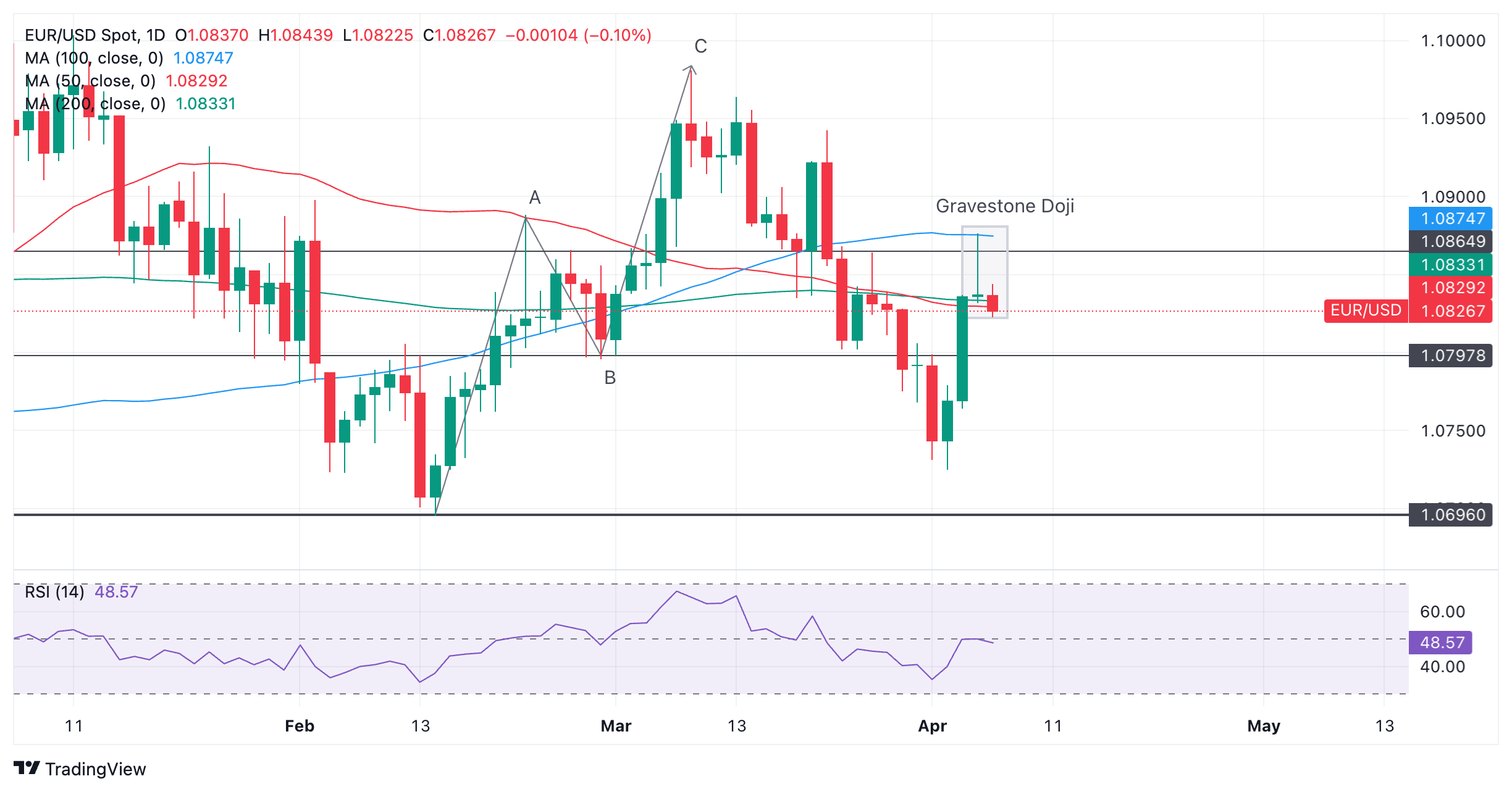- The EUR/USD pair falls after the publication of Non-Farm Payrolls data, which shows the creation of 303,000 new jobs.
- Economists expected only 200,000 new jobs. The US dollar appreciated on the news.
- Tensions in the Middle East drive up oil prices, which has an impact on global inflation.
- Fed authorities hesitate on the timing of the first interest rate cut, data from German factories weighs.
The EUR/USD pair broke lower and touched 1.0800 on Friday, after the release of US Non-Farm Payrolls (NFP) data beat expectations. Data showed that the US economy added 303,000 new jobs in March, compared to the 200,000 expected by economists. February's result of 275,000, meanwhile, was revised down to 270,000.
The data also showed a drop in the US unemployment rate to 3.8% from 3.9% previously. Economists did not expect changes.
These better-than-expected data indicate that the US economy remains in good shape. This means inflation will remain stubbornly high and reduces the chances that the Federal Reserve (Fed) will see fit to cut interest rates in June, as previously expected.
Another key component of the report, average hourly earnings, was unchanged, showing an increase of 4.1% annually and 0.3% monthly, according to data from the Bureau of Labor Statistics on Friday.
EUR/USD: Declines due to inflationary risks
EUR/USD was already trading down one tenth before the release of German industrial orders data on Friday, which saw a sharp decline to an annual rate of 10.6% in February, down from a decline of 6.2%. from January.
German factory orders data showed orders rising 0.2% in the same period, below economists' estimates of 0.8% but recovering from the 11.4% drop recorded in January.
Rising tensions in the Middle East are driving up the price of oil, with Brent crude trading above $90 a barrel. This is likely to be passed on to general inflation, fueling the thesis of policy makers who are pushing to keep interest rates high.
Minneapolis Federal Reserve (Fed) President Neel Kashkari has raised the possibility that the Fed will not cut interest rates in 2024 if inflation remains at current levels.
“If inflation continues to move sideways, I wonder if we should cut rates this year,” Kashkari said, despite admitting that he had planned two rate cuts this year.
Maintaining higher interest rates is positive for the US dollar as it increases foreign capital inflows.
There appears to be greater consensus among Eurozone rate-setters to move forward with the proposed interest rate cut in June, a factor weighing on the Euro (EUR).
The decision is likely to depend on whether wage data released before the June meeting shows a decline in wage inflation.
Technical analysis: EUR/USD without a clear direction
EUR/USD rose as high as the 100-day SMA at 1.0874 on Thursday, before reversing and closing flat on the day.
In the process, a Gravestone Doji candlestick pattern formed, with potentially bearish implications if followed by a bearish red candle on Friday.
EUR/USD Daily Chart
The short-term trend is unclear, with balanced risks. The 50-day SMA offers support at 1.0827.
A decisive break above the Doji candlestick's high at 1.0876 would neutralize its bearish implications and solidify the case for a short-term uptrend and indicate the likelihood of higher prices. The March 21 high at 1.0942 could be the next target.
Alternatively, if the downtrend continues, a pullback to the support of the previous wave B lows at 1.0798 is possible.
Economic indicators
Non-Agricultural Payrolls
The Nonfarm Payrolls publication presents the number of new jobs created in the US during the previous month in all nonfarm companies; It is published by the US Bureau of Labor Statistics (BLS). The monthly evolution of payrolls can be extremely volatile. The figure is also subject to strong revisions, which can also trigger volatility on the currency board. Generally speaking, a high reading is considered bullish for the US Dollar (USD), while a low reading is considered bearish, although revisions from previous months and the unemployment rate are just as relevant as the headline figure. The market reaction, therefore, depends on how the market values all the data contained in the BLS report as a whole.
More information.
Last post: Fri Apr 05, 2024 12:30
Periodicity: Monthly
Current: 303K
Consensus: 200K
Former: 275K
Fountain: US Bureau of Labor Statistics
The monthly US employment report is considered the most important economic indicator for currency traders. Published on the first Friday following the reporting month, the change in the number of positions is closely correlated with the overall performance of the economy and is monitored by policymakers. Full employment is one of the mandates of the Federal Reserve, which takes into account the evolution of the labor market when setting its policies, which has an impact on currencies. Although several leading indicators shape estimates, Non-Farm Payrolls often surprise markets and trigger high volatility. Actual numbers that exceed consensus tend to be bullish for the dollar.
Source: Fx Street
I am Joshua Winder, a senior-level journalist and editor at World Stock Market. I specialize in covering news related to the stock market and economic trends. With more than 8 years of experience in this field, I have become an expert in financial reporting.








